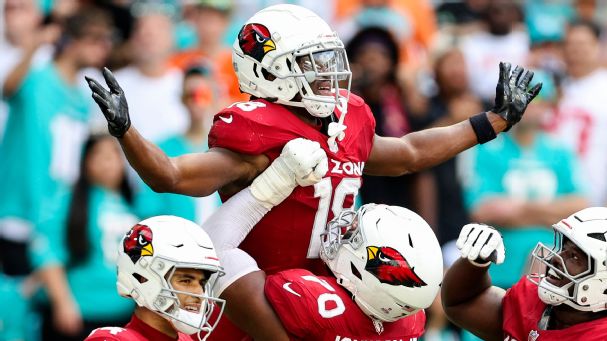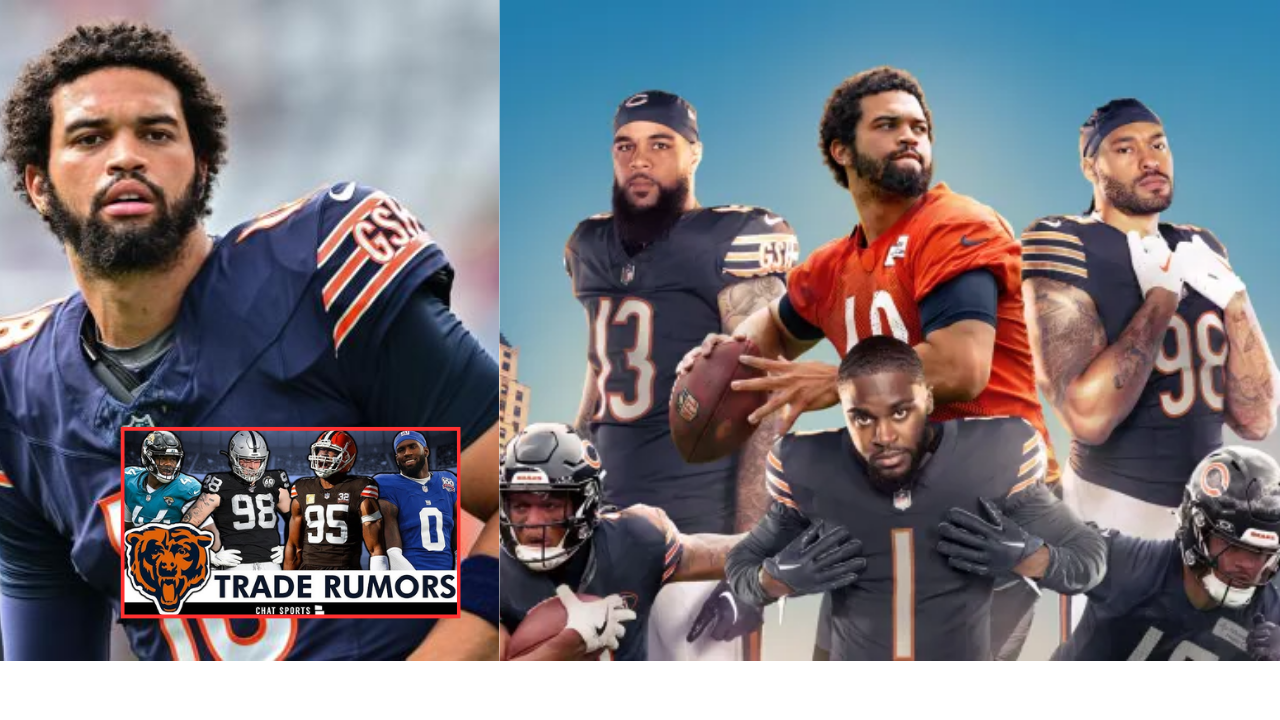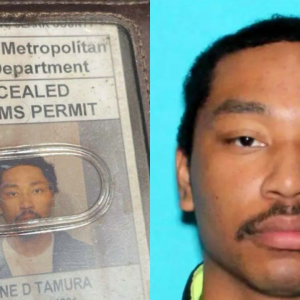GLENDALE, Ariz. — The Chicago Bears avoided disaster in the final moments of Sunday’s 29-9 loss to the Arizona Cardinals when rookie quarterback Caleb Williams limped off the field with an injured left ankle.
Williams said postgame that he was OK, but keeping the potential franchise quarterback in the last stages of a blowout raised some eyebrows. Williams said it wasn’t his decision to stay in, and coach Matt Eberflus said Williams was “just getting work and getting timing on the two-minute operation.”
It was noted that Williams was in there without his starting two tackles, who were hurt, and Eberflus responded: “The starters were left in the game because we’re going to fight to the end.”

While Williams wasn’t seriously injured, he did suffer through another tough outing. His 18.4 QBR was the second lowest of Week 9, ahead of only Indianapolis Colts QB Joe Flacco‘s 14.7. There are only four teams averaging fewer than the Bears’ 294.6 yards per game.
After a three-game win streak, the Bears (4-4) have lost two in a row and face a key opportunity Sunday against the New England Patriots (1 p.m. ET, Fox). The Bears are six-point favorites, per ESPN BET.
“Like I said every week, this is a week-to-week league,” Eberflus said when asked whether he’s feeling pressure. “It’s important that we stay focused on this week and the improvements for this week and stay dialed into those improvements.”
The Bears entered this season with a revamped offense led by Williams, who was surrounded with new weapons, and a new offensive coordinator in Shane Waldron. But all that produced is inconsistency. Here are the problem areas that need to be fixed before the season spirals into a lost cause.
There have been more than a few instances this season when Caleb Williams and Bears fans have wondered why things aren’t better. Greg Fiume/Getty Images
Subpar protection
Williams has been sacked 29 times, third most in the league. He is on pace to be sacked 62 times this season, which would be tied for the sixth most in NFL history.
Arizona had Williams under duress by pressuring him on 21 of his 50 dropbacks (42%). It led to six sacks, including on three consecutive plays.
“Get up, keep going,” Williams told himself as he kept taking hits. “Find a way to go win this game.”
Injuries along the Bears’ offensive line forced Chicago to start third-string left tackle Larry Borom and replace right tackle Darnell Wright, who left the second half with a knee injury, with Jake Curhan, who had been elevated from the practice squad for the Cardinals game. The poor pass protection contributed to Williams being hit 12 times.
Entering Week 9, Williams had a 31% completion percentage on throws with 15 or more air yards down field, which ranked 29th out of 32 qualified quarterbacks, according to ESPN Research. He was 1-of-8 on such throws in Arizona, with six off-target throws.
“When you protect your quarterback — and our quarterback’s a good quarterback — he can get the ball down the field and do a good job there,” Eberflus said.
A week prior, it was even worse. Washington pressured Williams on 63% of his dropbacks, the highest pressure rate he’s faced this season. He went 5-of-13 passing for 86 yards with two sacks and five scrambles.
No running game
Running back D’Andre Swift was Chicago’s catalyst in a late-game comeback in Washington when he ripped off a 56-yard touchdown run. Running back Roschon Johnson scored with 25 seconds left before the Bears lost on a Hail Mary.
It was the type of rushing attack the Bears envisioned when they signed Swift this summer. The Bears gained 202 rushing yards against Washington, and Swift had a rushing touchdown in four straight games.
But the run game reverted back to its early season struggles in Arizona. Swift ran the ball 16 times for 51 yards. The Bears averaged 3.0 yards per carry. Chicago’s once promising rushing attack ranks 23rd at 111.8 yards per game.
Is DJ Moore being underutilized? There have been times when his enthusiasm with the offense has been questioned. Troy Taormina-Imagn Images
Questionable playcalling
The day after the Cardinals loss, Eberflus said he would not be changing offensive playcallers. Waldron will continue to call plays against the Patriots.
“The changes we’re going to make is we’re going to look inward and make sure we do a good job of utilizing our talents and our skill, and really just general, basic execution of our plan,” Eberflus said.’
The offensive disarray started with the “negative plays” that Williams said hindered the offense’s ability to generate momentum. Penalties and plays that ended in negative yardage, highlighted by the six sacks, led to Chicago averaging 3.4 yards per play.
But as Eberflus has noted previously, the Bears’ offense is still struggling to get the ball to its best playmakers.
Tight end Cole Kmet entered Week 9 having caught 27 of his 30 targets for 303 yards and three touchdowns, which generated a +19.5 receiving EPA (third most among tight ends), according to NFL Next Gen Stats. He was not targeted against the Cardinals.
A total of 19 targets were divided between wide receivers DJ Moore and Keenan Allen. The two had a combined eight receptions for 69 yards.
When asked what he needs from Eberflus and Waldron to help him grow, Williams reiterated much of what he’s said throughout the season.
“I think we have to keep growing, keep communicating,” Williams said. “I think, for myself, I want to be better. I want to be able to help this team win. I want to be able to help [the] Chicago Bears reach their goals at the end of the season that we all have — that I’ve had, that I’m gonna keep having.
“I think we all have to do a better job putting ourselves in position.”






